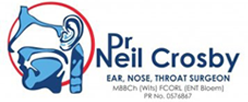If you experience a sudden buzz in your ear, a raspy voice that lingers, or a swelling in the neck, these may be small warnings that something larger might be unfolding. Answers start with precise testing. Every instrument in Dr Crosby’s practice is chosen to turn vague symptoms into clear facts so that the next step is never guesswork.
What are diagnostic procedures?
Diagnostic procedures are thoughtful tests designed to transform sensations — like pain, blockage, or ringing — into valuable, measurable data. They reveal whether trouble lies in bone, nerve, muscle, or mucosa. Instead of treating by trial and error, you and Dr Crosby see objective numbers, live images, or tissue samples that guide a targeted plan. Good diagnostics shorten recovery, reduce unnecessary medication, and spare you repeat appointments.
Why start with testing?
Many ENT symptoms overlap. Fluid behind the eardrum can mimic nerve loss, while reflux may look like an infection. Focused diagnostics separate one cause from another, saving time, cost, and frustration. You leave the consultation knowing exactly where you stand and which options are the best.
What tests do you offer?
Impedance Audiometry (Tympanometry)
A soft probe seals the ear canal and changes the air pressure for a few seconds. The machine measures how the eardrum flexes. A stiff eardrum often signals fluid or infection; a floppy drum may point to a tear. Knowing the difference directs you toward medicine, drainage, or surgical repair instead of blanket antibiotics.
Nasal Endoscopy
A slender camera glides through the nostril after a gentle decongestant and local anaesthetic spray. Real-time video exposes hidden polyps, swelling, or structural blockages. Photographs provide a baseline so later images can show progress. The test lasts under ten minutes, and you may drive home afterwards. To ease the process, avoid heavy makeup or nasal sprays on the morning of your appointment.
Laryngoscopy (Flexible or Rigid)
Flexible scopes pass through the nose while you breathe and speak; rigid scopes enter through the mouth and offer crystal-clear detail. Both capture high-definition images of the vocal cords, detecting nodules, reflux changes, or early cancer. If a throat scope is planned, skip large meals for two hours and bring a list of current reflux or voice medications.
How should I prepare?
Write down key symptoms, their duration, and anything that worsens or relieves them. Pause blood-thinning supplements only if instructed. Arrange a lift home if sedation is scheduled, though most patients return to normal activity immediately.
What happens next?
Results are explained in plain language, often on the same day. You receive printed reports plus a roadmap for treatment, additional imaging, or follow-up visits. With firm data in hand, you move one decisive step closer to sharper hearing, easier breathing, and a steadier voice.
Book a diagnostic procedure with us today.

